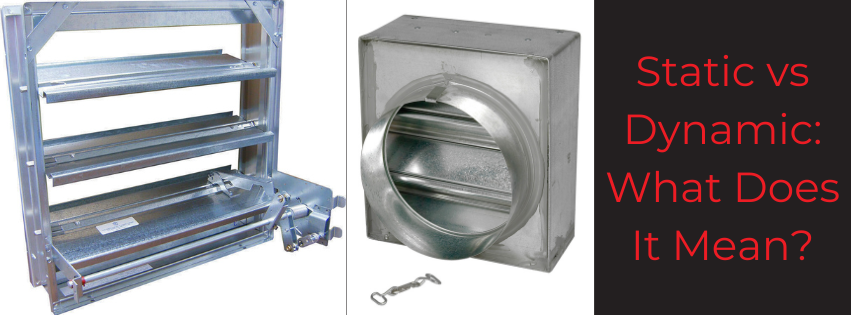
Smoke and fire dampers are critical components of building safety systems, designed to prevent the spread of smoke and flames during a fire emergency. Among the various types of dampers, static and dynamic dampers serve distinct purposes, each playing a crucial role in safeguarding lives and property. Understanding the differences between these two types is essential for ensuring effective fire protection measures.
Static Smoke and Fire Dampers: Static dampers are typically installed within ductwork systems and remain in a fixed position during normal operating conditions. These dampers feature fire-resistant materials and are strategically placed at specific locations throughout a building to compartmentalize fire and smoke, preventing their spread to other areas.
During a fire event, static dampers automatically close upon detection of elevated temperatures or the activation of a fire alarm system. By blocking the passage of smoke and flames through ducts and air ventilation systems, static dampers help contain the fire within its initial area of origin, buying valuable time for occupants to evacuate safely.
Dynamic Smoke and Fire Dampers: In contrast, dynamic dampers offer a more versatile and responsive approach to fire protection. These dampers are equipped with actuators or motors that allow them to open and close dynamically, based on real-time conditions such as airflow rates, pressure differentials, or smoke detection.
Dynamic dampers are commonly used in HVAC systems to regulate airflow and maintain proper ventilation levels throughout a building. During a fire incident, these dampers can adjust their position dynamically to optimize smoke control and evacuation routes, ensuring that smoke is effectively contained and vented out of the building while maintaining safe egress paths for occupants.
Key Differences and Considerations: The primary difference between static and dynamic smoke and fire dampers lies in their functionality and operational capabilities. While static dampers provide essential compartmentalization and containment, dynamic dampers offer greater flexibility and adaptability in response to changing fire conditions.
When designing fire protection systems, it's crucial to consider the specific requirements of the building, including its size, layout, occupancy type, and ventilation system. By incorporating a combination of static and dynamic dampers where appropriate, building owners and fire safety professionals can enhance the overall effectiveness of fire suppression and smoke control measures, ensuring maximum safety for occupants and minimizing property damage.
Both static and dynamic smoke and fire dampers play integral roles in safeguarding buildings against the devastating effects of fire. By understanding their differences and selecting the right damper types for each application, facilities can enhance fire safety standards and mitigate risks effectively.

